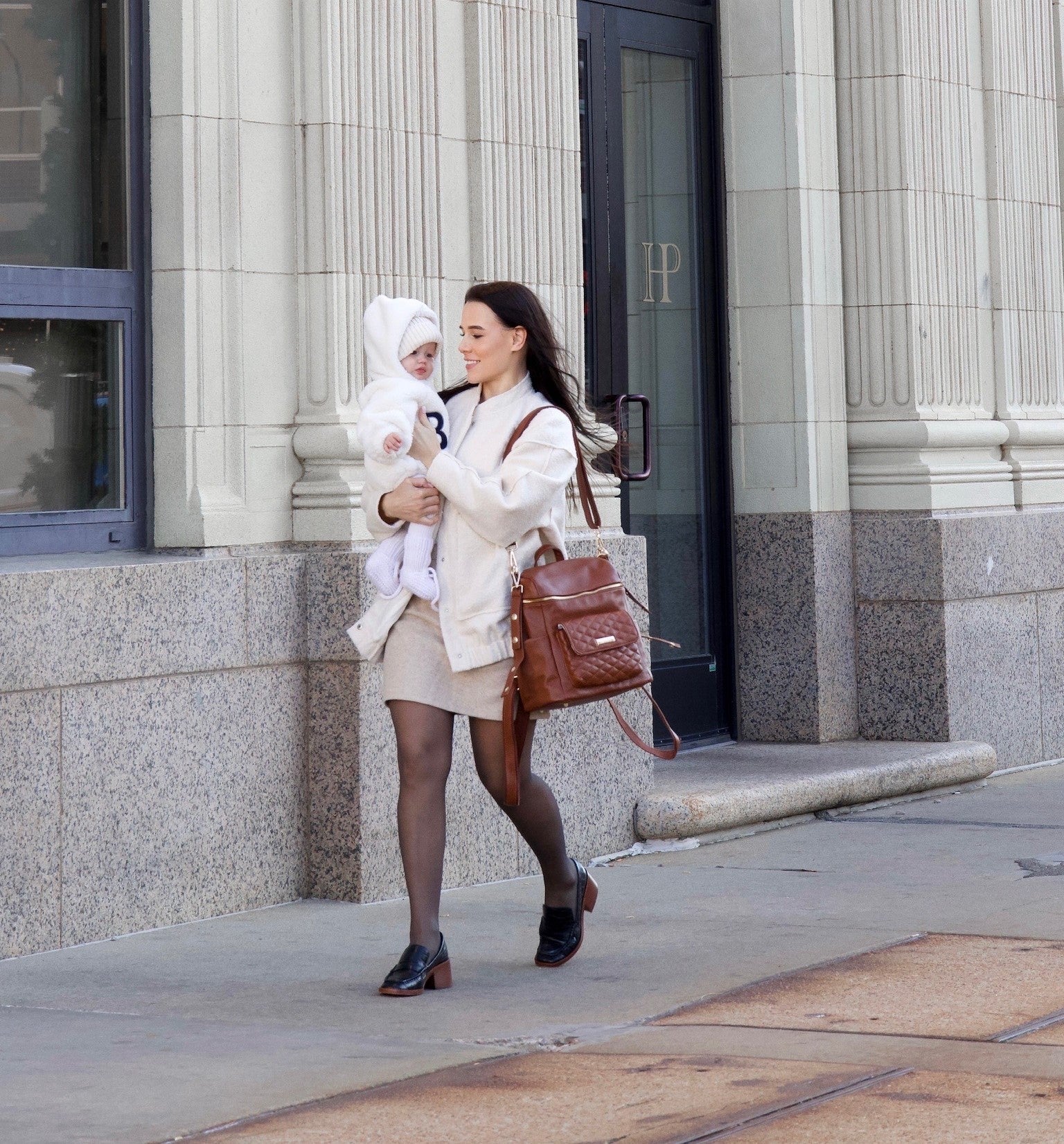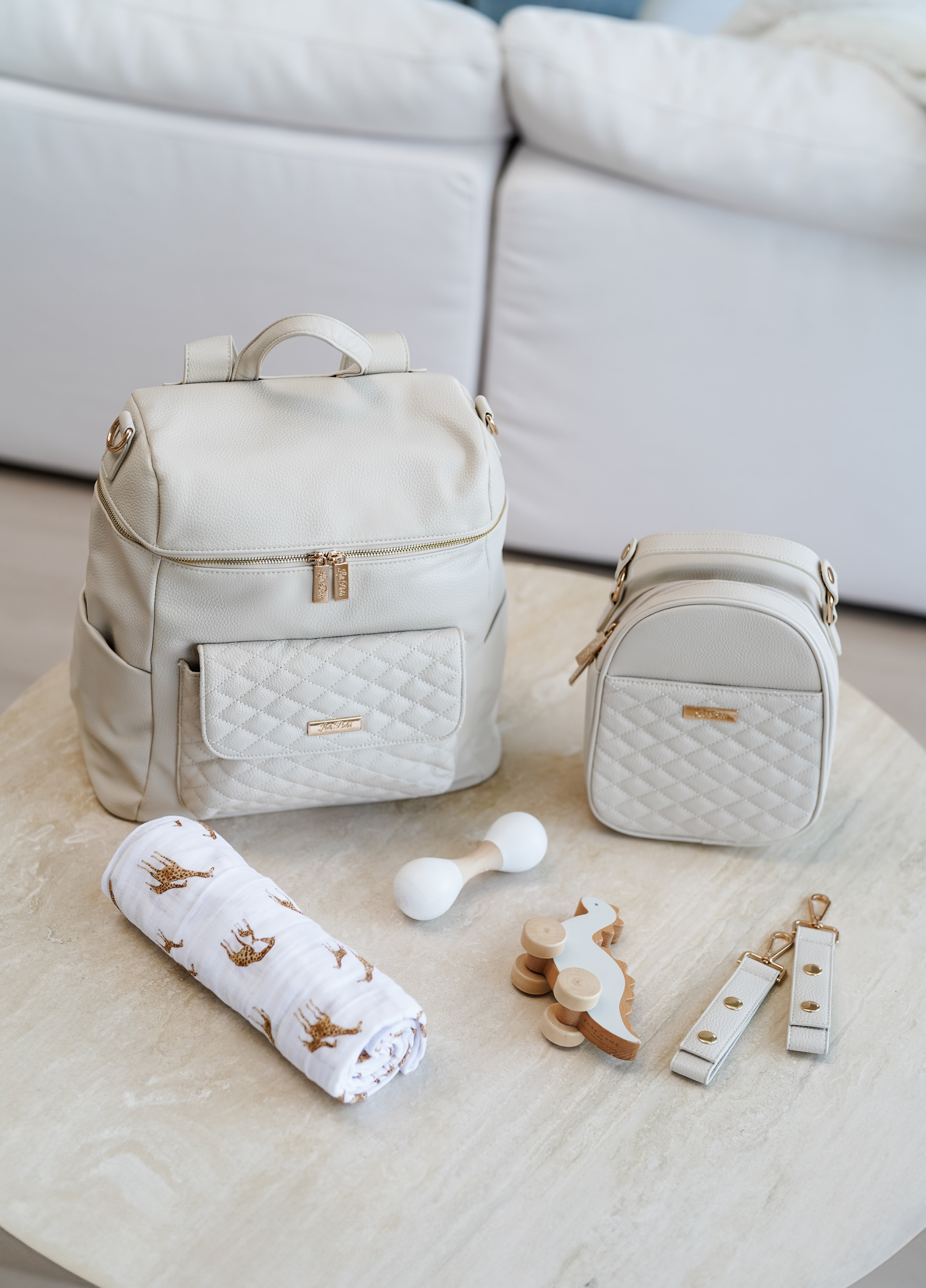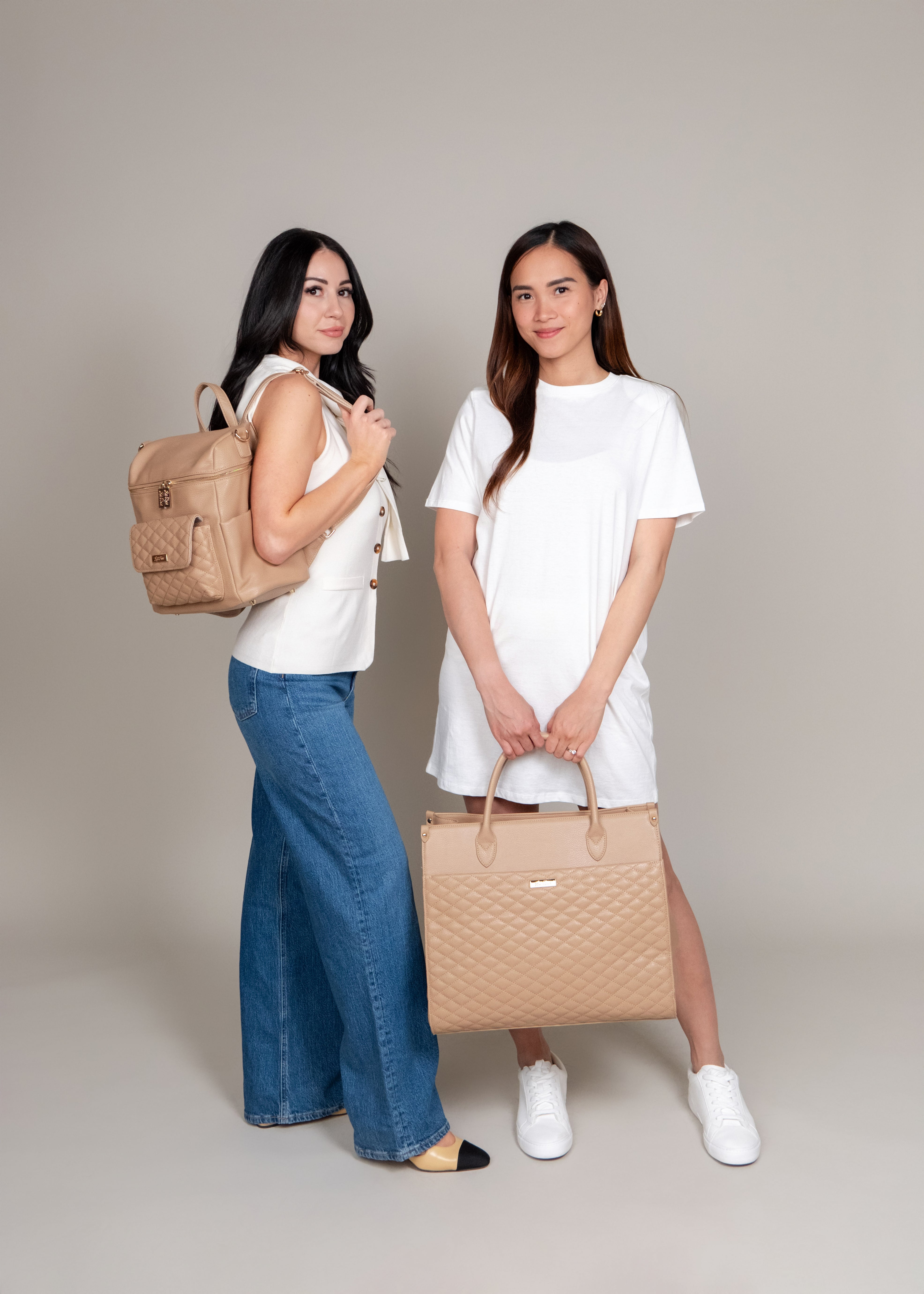
When Does a Child Stop Being Considered a Newborn
Parents often wonder, When does a kid stop being a newborn?
This question doesn’t just stem from curiosity but influences various aspects of caregiving, from the gear you carry to how you respond to your baby’s needs. Knowing when your child transitions from being a newborn can help guide parenting decisions, including updating diaper bag essentials as they grow.
Let’s explore the milestones that mark the end of the newborn phase, developmental changes to expect, and how to adjust baby essentials accordingly.
The Three Developmental Stages: Infants, Toddlers, and Newborns
Understanding when does a kid stop being a newborn and enters infancy and toddlerhood will help you provide the right care. Here’s an overview of the average age range and defining characteristics for each stage:
Newborn (0–3 Months): Defined by reflexive movements, frequent feedings, and rapid adaptation to the environment outside the womb.
Infant (3–12 Months): Babies become more interactive, sleep longer at night, and start exploring their surroundings.
Toddler (1–3 Years): With greater mobility and independence, toddlers actively explore and learn through movement and interaction.
0-3 Months: The Newborn Stage
Newborns focus on their survival instincts and meeting their basic needs as they become used to life outside the womb. They have regular feeding and sleeping schedules and rely primarily on reflexes throughout this period.
Key Newborn Characteristics
Reliance on Reflexes: Newborns depend on reflexes like rooting, sucking, and grasping for feeding and bonding.
Frequent Feedings: Newborns need to eat every 2–3 hours, with about 8–12 feedings daily to support rapid growth.
Sleep Needs: They sleep between 14 and 17 hours per day.
Sensory Adjustment: Newborns are still adjusting to the outside world, gradually becoming aware of sounds, lights, and sensations.
Diaper Bag Essentials for Newborns
For newborns, frequent diaper changes and feedings are a given. Make sure your diaper bags include the following essentials:
Diapers and Wipes: Since newborns go through about 8–12 diapers daily, pack 6–8 diapers per outing.
Portable Changing Pad and Disposable Bags: These are useful for quick diaper changes in any setting.
Feeding Supplies: Pack a nursing cover for breastfeeding, sterilized bottles for bottle-feeding, and formula or pre-pumped milk.
Extra Clothing: Babies often need many outfit changes, so keep 2–3 spare outfits.
Burp Cloths and Bibs: Essential for managing drool and spit-up.
Comfort Items: A soft blanket or pacifier can soothe a newborn during outings.
3-12 Months: The Infant Stage
After 3 months, your baby enters the infant stage, characterized by increased interaction and mobility. During this stage, babies become more aware of their surroundings and achieve critical developmental milestones. These milestones include improved head control, social smiling, and crawling.
Key Infant Characteristics
Social Engagement: Babies begin to smile, laugh, and respond to voices and sounds. This is also the stage when they start recognizing familiar faces.
Enhanced Motor Skills: With improved neck strength, babies can hold their heads up and may begin pushing up during tummy time. By 6–9 months, they may start rolling, sitting, or crawling.
Longer Sleep Stretches: Infants tend to sleep more at night, sometimes 5–6 hours at a stretch, which can be a relief for parents.
Teething and Introduction to Solids: Teething often begins around 4–6 months, and solid foods may start at 6 months if a pediatrician recommends it.
Diaper Bag Essentials for Infants
Your diaper bag contents should change with your baby’s growing curiosity and physical activity. Consider adding these items:
Diapers and Wipes: You may need fewer diapers for older infants, but still, pack at least 4–6.
Teething Accessories: Include teething toys and extra bibs to handle drool.
Baby Snacks and a Spoon: For babies starting solids, pack easy snacks, like puree pouches, along with a small spoon.
Blanket for Versatility: A light blanket can serve as a play area, warmth, or cover while breastfeeding.
Interactive Toys: Include rattles, soft books, or sensory toys to engage your baby during outings.
1-3 Years: The Toddler Stage
Once your baby turns one, it transitions into toddlerhood. This stage marks greater independence, mobility, and curiosity. Toddlers learn through movement, so expect more walking, climbing, and a desire to explore everything in sight. Communication skills also begin to develop during this period.
Key Toddler Characteristics
Active Exploration: Toddlers are curious and motivated to move, often walking or running, as they master motor skills.
Increased Language Skills: Vocabulary expands rapidly, and many toddlers start forming simple sentences by age 2.
Emotional Expression: This is a stage of strong emotions as toddlers learn to communicate feelings. Tantrums are common as they navigate frustration and independence.
Transition to Potty Training: Many toddlers show readiness for potty training between 18 and 24 months. Every child is different; some start potty training as young as 8 months!
Diaper Bag Essentials for Toddlers
Diaper bags for toddlers need to accommodate a more active and independent child. Here’s what to include:
Diapers or Training Pants: Carry a few training pants or extra underwear for toddlers transitioning to potty training.
Snacks and Sippy Cups: Toddlers need frequent snacks, so pack easy-to-eat options and a spill-proof sippy cup.
Change of Clothes: Messes are inevitable with toddlers, so an extra outfit is essential.
Portable Toys or Books: Small books, toys, or even crayons can keep toddlers occupied during longer outings.
Hand Sanitizer and Wipes: For quick clean-ups as toddlers touch everything in their path.
Packing these essentials will help manage the needs of a busy toddler while allowing them the freedom to explore.
Baby Gear Essentials for Every Stage
There are new baby gear essentials for every growing stage. The following products support your child’s development and mobility:
Ergonomic Baby Carrier: From the newborn to toddler years, a good carrier lets you move hands-free and adjusts as your child ages.
Convertible Car Seat: A convertible car seat can help a child from infancy through toddlerhood once they outgrow an infant car seat.
Lightweight Stroller: Choose a multipurpose stroller that reclines. Lightweight strollers are perfect for babies, while adjustable models are useful for toddlers.
High Chair: When newborns start solid foods at six months old, a high chair with movable settings is a need that can grow with your child.
Play Mat or Activity Gym: These mats promote movement, reaching, and tummy time, making them ideal for babies and infants.
Baby-Proofing Supplies: Gates and outlet covers help create a safe environment for toddlers constantly on the go.
These necessities guarantee your baby gets support as they grow and make daily living with a newborn, infant, or toddler easier.
Ending Thoughts
Adapting to a baby’s developmental demands is easier if you know when they transition from newborn to toddler. Acknowledging each stage’s unique characteristics can help you be better prepared. This awareness helps guide your approach to parenting and ensures you have the right baby gear essentials and diaper bag essentials for growing baby.
Looking for a diaper bag that grows with your child? The Monaco Diaper Bags from Luli Bebé provide stylish, spacious, and organized solutions for every stage, from newborns to toddlers, ensuring you have everything you need at your fingertips.





